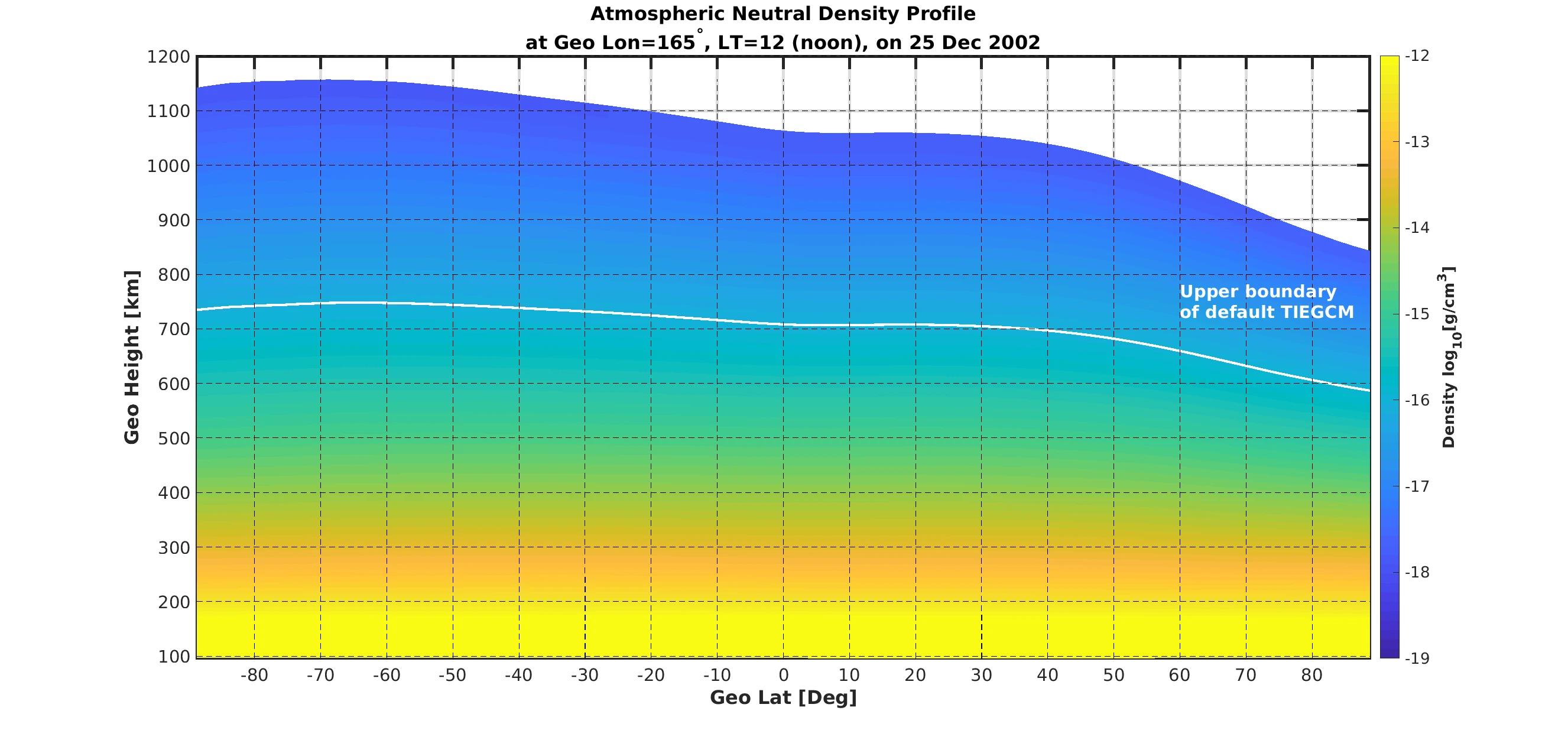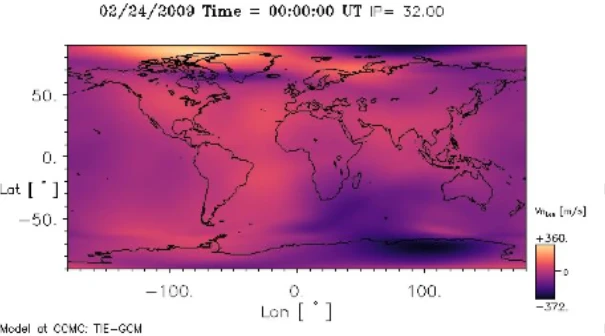TIE-GCM Model Updates
June 2025
As of June 6, 2025, the Thermosphere-Ionosphere-Electrodynamics General Circulation Model version 3.0 (TIE-GCM v3.0) is available to the research community through the CCMC Runs-On-Request service. Developed by the U.S. National Science Foundation’s National Center for Atmospheric Research (NSF NCAR), TIE-GCM is a physics-based, first-principles model designed to simulate the coupled thermosphere-ionosphere system of the Earth's upper atmosphere.
TIE-GCM v3.0 marks a significant advancement over the previous major release (v2.0 in 2016), incorporating extensive improvements in resolution, physical parameterizations, and model flexibility. Key updates include enhanced horizontal and vertical spatial resolution, an elevated upper boundary for improved representation of the topside ionosphere, and refined treatments of minor species and thermal processes. The new version also supports boundary nudging, enabling improved coupling with lower atmosphere models or reanalysis data.
These upgrades allow researchers to investigate space weather impacts, ion-neutral interactions, and the upper atmosphere’s response to solar and geomagnetic variability with greater accuracy and detail.
TIE-GCM v3.0 simulations can now be requested through the CCMC Runs-On-Request system to support a wide range of scientific studies and mission planning efforts related to the near-Earth space environment.
December 2022
As of 12/22/2022, a new version of TIE-GCM v2.5 or TIE-GCM-X is available to the research community through the CCMC Runs-On-Request Service.

The new version allows users to choose three upper boundary options, approximately 500 km, 700 km and 1000 km during solar maximum. Horizontal resolution has two new options, 2.5 degrees and 1.25 degrees. Helium is added to the model. More information of the new TIE-GCM can be found at: https://agupubs.onlinelibrary.wiley.com/doi/full/10.1029/2022SW003227
